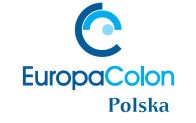Colon Cancers Country Data
We have developed an interactive data map to view and compare colon cancer statistics from across Europe. We are endeavouring to build on it by continually gathering data and by keeping it as current as possible.
The Country Maps allow to compare countries by the number of patients, the mortality and the overall survival. By clicking on one country, its statistics will appear in the table next to the current Best Practice in Europe. By clicking on two or more countries, you can compare the data of these countries. Up to four countries can be compared. As you will notice, there are huge differences between the different countries. These are the results of lifestyle choices, the age of the population and the quality of the healthcare system.
| Colon Cancer | Best Practice |
|---|---|
| New cases | N/A |
| Mortality | N/A |
| Incidence | 31.9 |
| Survival | 72·1 |
| Screening technology | FIT |
| Target population | 50-74 |
| Screening participation rate | 65 |
| Cancer Plan | 2017 |
The indicators used:
-
- New cases: gives the actual number of newly diagnosed patients in the course of a year (latest year available)
- Mortality: is the number of patients who die from their disease in the course of a year. This is a good measure of the size of the issue for patients and society.
- Incidence: is the number of newly diagnosed patients per 100,000 inhabitants. This allows to compare countries and see where the least or the most patients with a certain condition are diagnosed
- 5-year Overall Survival: is the percentage of patients who are still alive five years after ending their cancer treatment. This is a good measure of the quality of the health services in a country
- Screening technology used: many types of technology exist to be used during colorectal cancer screening programmes. the FIT Test is currently the most recommended technology, because it is accurate, cheap and easiest to use for patients.
- Target population screened: the recommendation by the European Ministers of Health made in 2003 is that all citizens between 50 and 74 years old should be invited to participate in colorectal cancer screening programmes
- Screening participation rates: the recommendation by the European Commission is that more than 65% of citizens participate in colorectal cancer screening programmes. The higher the participation, the better the outcomes and the better the cost-effectiveness of screening programmes.
- National Cancer Plan: this demonstrates how up-to-date a country’s cancer plan is
Sources
The incidence and mortality statistics: European Cancer Information System (ECIS), consulted in 2020. The data are from 2018.
The mortality statistics come from the CONCORD Study, published in The Lancet, January 2018. The data are from 2014.
All data from Eastern Europe are derived from the WHO Globocan Database, 2020.

